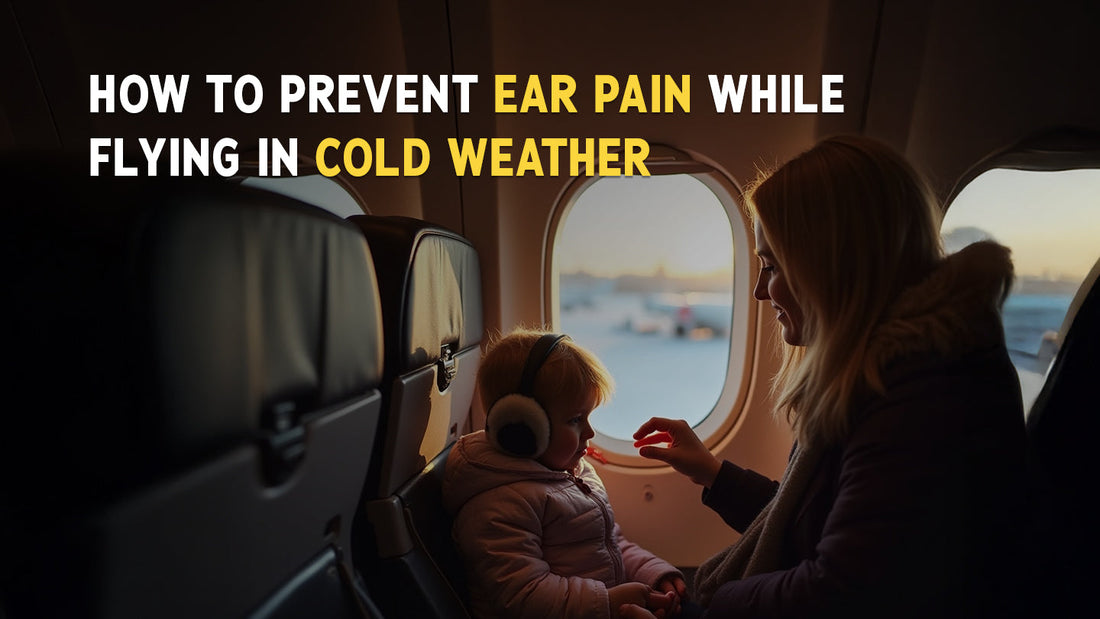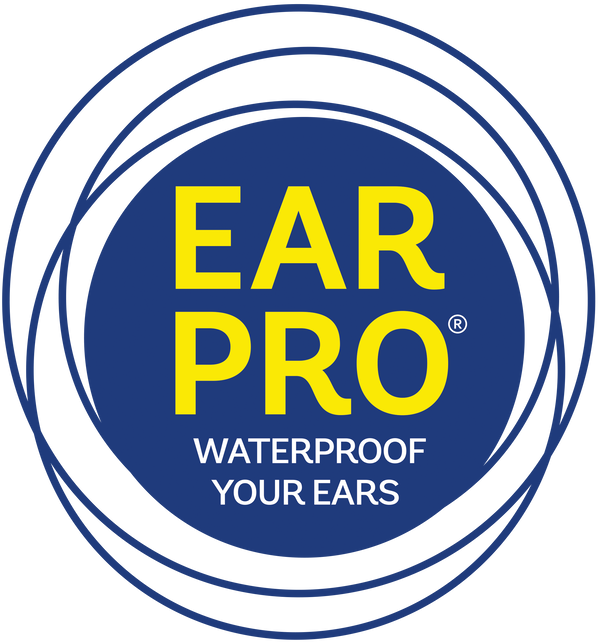
How to Prevent Ear Pain While Flying in Cold Weather
Share
Flying during winter can feel tough on your ears. Low cabin humidity, pressure shifts, and seasonal congestion make problems more likely. This guide gives clear, science-backed steps to prevent ear pain when flying in winter.
Table of Contents
1. Why Flying in Winter Causes More Ear Problems
2. Understanding Airplane Ear and Pressure Changes
3. Cold Weather Factors That Make Ear Pain Worse
4. Best Preventive Strategies Before Your Flight
5. In-Flight Techniques to Reduce Ear Pressure
6. Safe Ear Protection Options: Earplugs vs. Ear Sprays
7. Tips for Kids and Seniors Traveling in Winter
8. Post-Flight Care to Avoid Infections or Discomfort
9. When to Seek Medical Advice for Flight Ear Pain
10. Conclusion
11. Frequently Asked Questions
Why Flying in Winter Causes More Ear Problems
Small pressure changes are harder to handle when your nose and eustachian tubes are congested. Dry cabin air adds irritation, so your ears equalize more slowly. That is why ear pain when flying in winter is a frequent complaint in cold months.
Cold viruses and congestion narrow the eustachian tube
Winter colds and allergies swell tissues that keep the pressure tube open. That swelling slows pressure equalization during descent.
The CDC’s Yellow Book confirms cabin pressure shifts and congestion raise barotrauma risk. Keep congestion controlled before travel.
Dry cabin air irritates the airway lining
Aircraft cabins typically run at 10–20 percent humidity. Dryness thickens mucus and can aggravate mild congestion. Sip water often and consider saline to keep nasal passages moist.
Understanding Airplane Ear and Pressure Changes
Airplane ear means the pressure behind the eardrum does not match the cabin pressure. It peaks during takeoff and especially during descent. Ear pain when flying in winter often reflects this temporary mismatch.
What is airplane ear, and how does it start
The eustachian tube balances ear pressure by opening when you swallow or yawn.
If it is blocked, a vacuum stretches the eardrum and causes pain or muffled hearing. ENT experts outline simple equalization steps that help fast.
What does airplane ear feel like during descent?
Most people notice pressure, popping, or dulled hearing as the plane lowers. Symptoms usually ease with swallowing or gentle maneuvers.
Seek care if pain is severe or hearing drops suddenly after landing.
Cold Weather Factors That Make Ear Pain Worse
Seasonal respiratory viruses and dry air both increase risk. Planning reduces symptoms and helps ear pain when flying in winter stay minor.
Why winter infections raise the risk
Cold snaps can dampen nasal immune defenses, making colds more common. That extra congestion blocks the pressure tube. Keep vaccines current and manage colds before travel.
Do cabins feel drier in winter, and what helps
Cabins stay dry year-round, and humidity can average near 10–20 percent. Carry a saline spray, drink water, and limit alcohol. These humidification tips for dry airplane cabins help your nose and ears work better.
Best Preventive Strategies Before Your Flight
A few small steps lower the chance of discomfort. These airplane ear prevention tips are easy to apply and clinically grounded.
Build a simple winter flight checklist
Treat active colds first and consider postponing travel if severely congested.
Keep allergy meds on schedule and pack a saline spray. Plan to stay awake for the descent. These basics prevent most issues.
Consider decongestants if your clinician approves
Some randomized trials found that oral pseudoephedrine before flying reduced barotrauma incidence.
Discuss risks and dosing with your clinician, especially if you have heart or blood pressure issues.
In-Flight Techniques to Reduce Ear Pressure
You can keep pressure balanced with gentle, proven maneuvers. Practicing them before descent helps ear pain when flying in winter stay minimal.
Use gentle equalization during ascent and descent
Swallow, yawn, or chew gum often. Try a light Valsalva or Toynbee maneuver, never forcefully. These safe ear equalization methods are first-line and kid-friendly with supervision.
What brings ear pressure relief during flights quickly
Stay awake for the last 30 minutes before landing. Sip water to prompt swallowing. If cleared by your clinician, a long-acting decongestant may help. Stop if pain is sharp or dizziness appears.
Safe Ear Protection Options: Earplugs vs. Ear Sprays
Choose tools by what problem you want to solve. For pressure, active equalization is key. For moisture control and comfort, a mineral-oil barrier can help.
What to know about filtered earplugs
Pressure-regulating earplugs reduce noise but show mixed evidence for preventing barotrauma. A chamber study found no prevention benefit and possibly worse scores. Use them for noise comfort, not as a pressure cure.
Where best ear protection for airplane travel?
For comfort, quality earplugs or noise-canceling headsets ease cabin noise. For ear canal moisture, an alcohol-free mineral-oil spray forms a water-repellent barrier and is kid-safe. Use as directed and never to treat acute pain.
Tips for Kids and Seniors Traveling in Winter
Children have narrower eustachian tubes. Older adults may have more congestion triggers or medical conditions. Tailored habits limit ear pain when flying in winter across all ages.
Helping children equalize comfortably
Offer a pacifier, bottle, or sippy cup during descent. Keep them awake for the last 30 minutes. Avoid decongestants under age four, per pediatric guidance quoted by CDC.
Managing ear discomfort in seniors while flying
Review medicines that dry mucosa and discuss options with your clinician. Use saline, hydrate, and plan frequent swallows. Consider clinician-approved decongestants if congestion is significant.
Older frequent flyers can explore why seniors often choose Ear Pro instead of traditional earplugs.
Post-Flight Care to Avoid Infections or Discomfort
Good hygiene and dryness protect ears after arrival. These steps support recovery if your ears feel pressured or full.
Simple steps for how to avoid ear infections after flying
Wash hands often, keep vaccinations current, and dry ears thoroughly after showers or swimming at your destination. Do not insert cotton swabs into the canal.
Smart ear care for frequent winter travelers
Build a routine: manage allergies, carry saline, practice equalization, and rest well before flights. If symptoms persist beyond a day, schedule an ear check to rule out fluid or injury.
Regular travelers can discover the everyday benefits that make consistent Ear Pro use simple and practical.
When to Seek Medical Advice for Flight Ear Pain
Most airplane ear resolves within hours. Still, some signs mean you should see a clinician, especially in winter when infections circulate.
Severe pain, ringing, spinning, fluid drainage, or hearing loss after landing warrants prompt care. Persistent fullness beyond 24 to 48 hours also needs evaluation for barotrauma or fluid.
Conclusion
Winter air travel does not have to hurt. Plan, manage congestion, hydrate, and practice gentle equalization so ear pain when flying in winter stays rare and brief.
For added comfort against dryness and water exposure, try the alcohol-free, mineral-oil barrier of Ear Pro 20 ml. Safe travels and happy landings.
Frequently Asked Questions
1. Why does flying in winter cause more ear pain than in summer?
Winter colds and allergies clog the nose, so the eustachian tubes open less often to balance pressure.
Cabin air is also very dry, which thickens mucus and slows clearing. That mismatch peaks on descent and feels like pain, fullness, or popping.
Hydration, saline, and treating congestion before travel usually help.
2. What is the safest way to relieve ear pressure during a flight?
Swallow, yawn, or chew gum throughout ascent and descent.
Try a gentle Valsalva: pinch your nose, close your mouth, and blow softly for one second, then repeat as needed and stop if it hurts.
Stay awake for the final 30 to 45 minutes before landing and sip water often. Equalize early, often, and never forcefully.
3. Can kids use ear sprays or earplugs to prevent airplane ear?
Infants and young children equalize best by sucking on a bottle, breast, or pacifier during descent.
Child-sized earplugs can reduce noise, but pressure relief still comes from frequent swallowing.
An alcohol-free, mineral-oil ear spray may keep the ear canal comfortable in dry cabins, yet it does not relieve pressure.
Always check with a pediatrician first, especially if the child has ear tubes, ear pain, or a recent infection.
4. How can seniors protect their ears when flying in cold weather?
Plan by managing allergies, using saline, and drinking water to keep tissues moist.
Practice gentle equalization and avoid sleeping through descent so you can swallow often.
If you use decongestants or have heart or blood pressure conditions, speak with your clinician before the flight.
Pack hearing-aid supplies and remove them briefly only if needed for comfort while equalizing.

